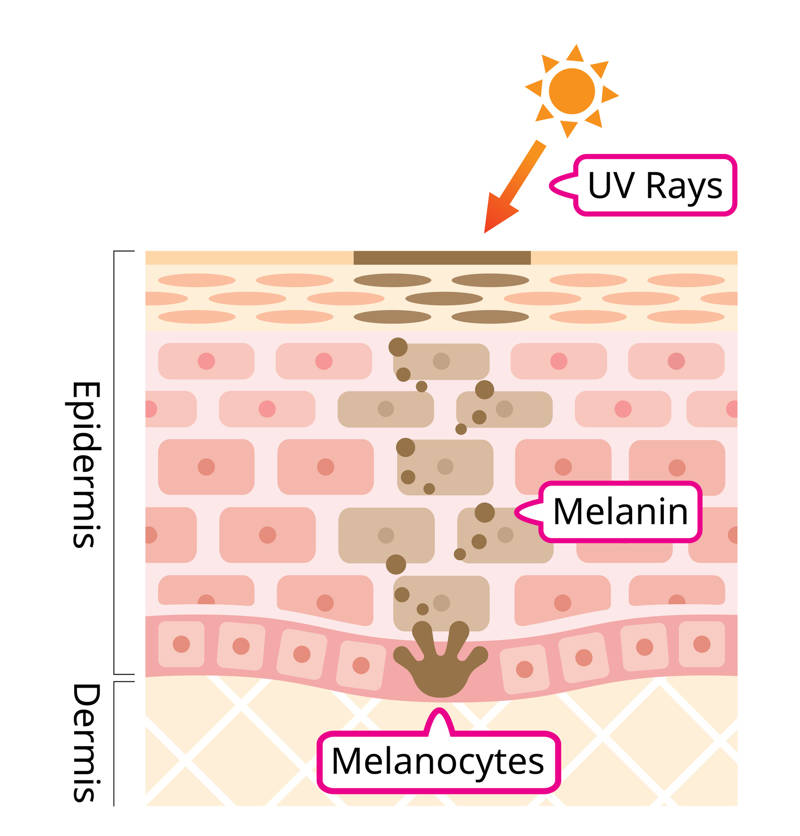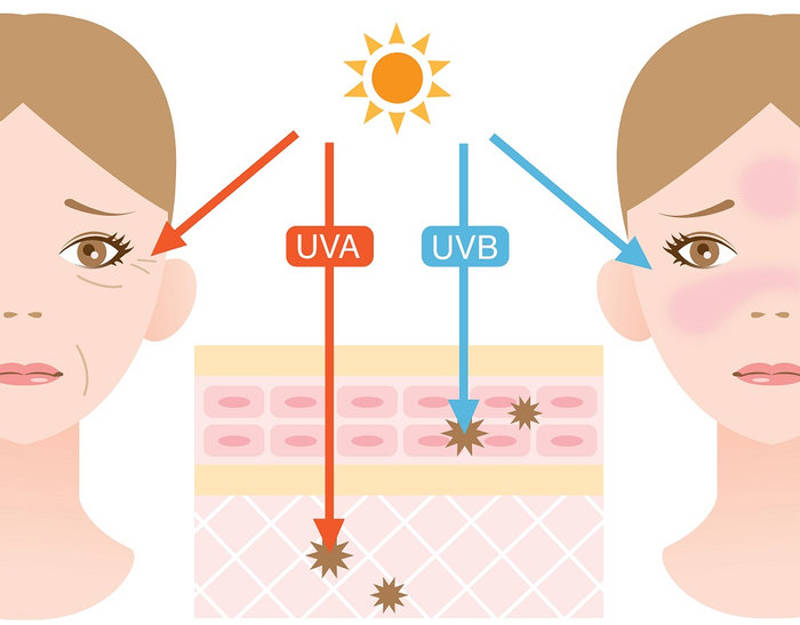
No one can deny that one of the pleasures of summer is lying on a beach listening to the purring of the waves in the background, while you feel the heat of the Sun on your body. It is a moment of calm and relaxation that also results in a beautiful tan on your skin, much desired by many in these hot months. Well, yes, as long as you have protected your skin and it is not damaged with painful and harmful burns.
But, did you know that this beautiful shade of brown is simply a protective measure for your skin against the incidence of the Sun? And that there are certain rays for which the only defense is sunscreen? In fact, ¿did you know that you can even get a tan in the shade? We tell you everything about how your skin works when it comes into contact with the sun’s rays so that you can better understand what happens to your body in summer and, in addition, you are able to protect it in the best possible way.
A protection mechanism
The sun’s rays, no matter how satisfying the heat they transmit may be, can be very harmful to the body. And it is that, they are capable of crossing the barriers of the skin and reaching the cells, altering them in an abrupt and harmful way. In other words, radiation is capable of inciting the breakdown of nutrients responsible for proper cell function, altering the cells themselves and producing their mutation and, in the worst case, the development of diseases such as cancer.
To prevent this damage, the body has its own protective mechanism: melanin. Thus, it is capable of detecting the arrival of the sun’s rays and launching a whole process of cellular responses. The protagonists are melanocytes, cells derived from the neural crest, with the ability to produce a pigment called melanin. This substance, which also has a dark tone, travels through the skin, is packaged in a kind of bags called vesicles and is located around the cells.

In this way, the more Sun arrives, the more melanin surrounds the cell in order to protect it and prevent it from coming into contact with radiation and the rays from penetrating it. All this accumulation of melanin gives the skin the characteristic brown tone of a tan, being a little more intense the more exposure the skin receives.
UVB and UVA rays
However, as incredible as this process is, it does not generate a response to all the radiation from the Sun, but only to a part of it. Thus, solar ultraviolet (UV) radiation is broken down into three subtypes: UVC, UVB and UVA. In principle, and as long as climate change does not continue advancing, you should not worry about UVC, since they are a type of rays filtered by the ozone layer and never reach the surface.
In the case of UVA and UVB, things are very different, because they do pass through your skin, reaching your body. However, there is a clear difference between them: melanin is capable of stopping UVB, but not UVA, which you can only prevent from penetrating the skin by applying a layer of sunscreen as a defense.
UVB are rays capable of penetrating the dermis, so they are those that can launch cells, mutate them and generate cancer-type diseases. In addition, they are the cause of sunburn. However, melanin can stop its progress and protect cells from its effect. Of course, as long as the amount of existing melanin is sufficient for it.

For their part, UVA are a type of rays that penetrate the skin more than the previous ones, but do not have such a direct effect on the cells, but directly damage collagen and elastin. As they do not cause sunburn or tanning, they are known as “invisible rays”, because they pass through the skin without you noticing: neither you nor your body. And it is that the body does not produce any type of reaction against them. They are responsible for the development of pigmentation problems, photoallergic and phototoxic responses, in addition to producing premature aging of the skin and the only way to protect yourself from them is by applying sunscreen.
It is for this reason that, even if you are tanned, you need to apply sun cream with a high protection factor. And it is that, the only way to protect your skin from all types of solar radiation and avoid the development of health problems is through the use of sun cream. It doesn’t matter if you’re tanned, your skin continues to suffer and needs you to protect itself.
tan in the shade
In fact, ¿did you know that the application of sunscreen is recommended even if you are in a swimsuit under the umbrella? And, although it may seem like an exaggeration and extreme protection methods, it is something very logical and reasonable. And it is that, it must be taken into account that some surfaces have certain characteristics that make them reflective, that is, act as if it were a mirror. Therefore, even if you are under a shadow, radiation reflected from the sand, grass, concrete or water around you may still reach you.
The data speak clearly: grass is capable of reflecting 20% ??of the sun’s rays that fall on it, sand 15% and seawater foam up to 25%. Therefore, even if you place yourself in the shade, it is recommended to apply a protector that defends your cells from those “stray” rays and, thus, avoid undesirable burns. (National Geographic) (Photo: Demedicina.com/ Taken from Cubahora)